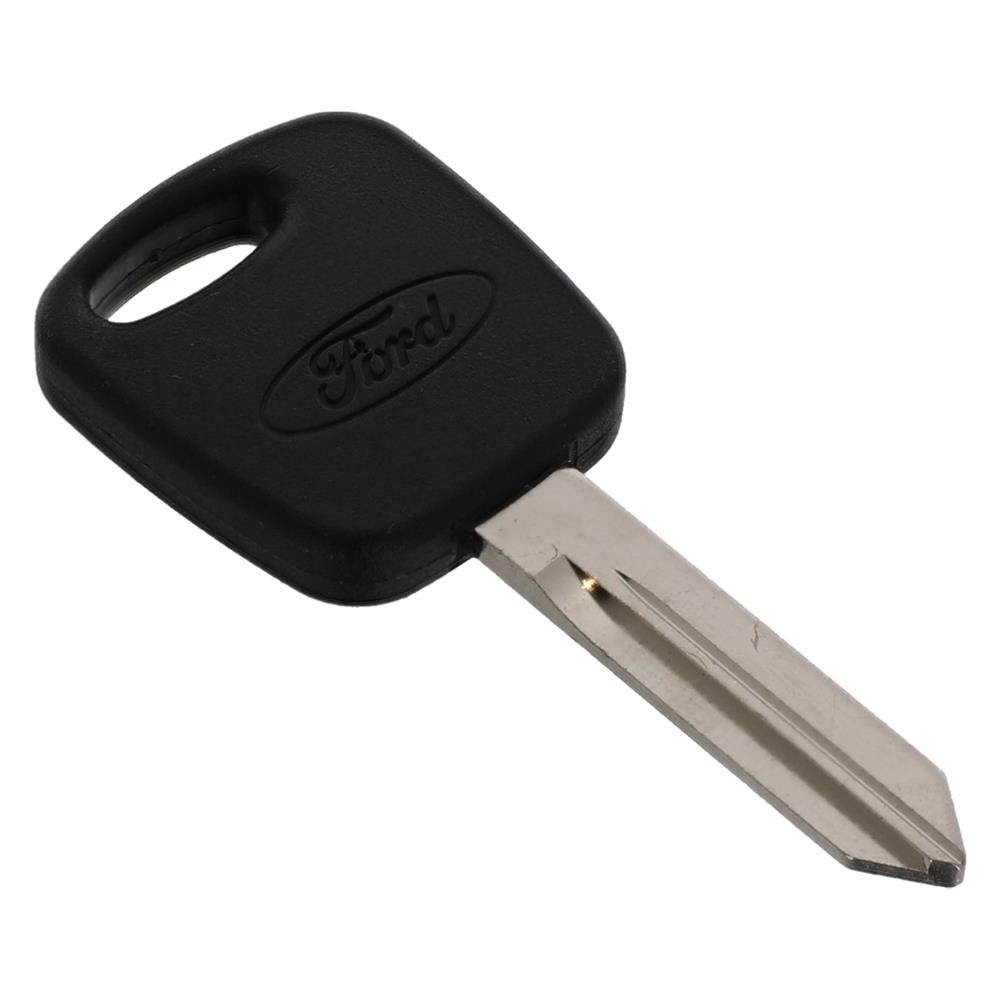Ford Mustang PATS system key not working occurs when the system fails to recognize the key’s transponder chip, preventing the engine from starting. This can be caused by a damaged key, faulty transceiver, or PCM issues.
If you’re driving a Ford Mustang and have encountered an issue where your key isn’t starting the engine or the theft light is blinking rapidly, it’s likely related to the Passive Anti-Theft System (PATS). This system, designed to prevent unauthorized access to your vehicle, can occasionally malfunction, leaving your car immobilized.
In this detailed guide, we’ll explore the PATS system, why it might fail, common symptoms, and step-by-step troubleshooting solutions to get your Mustang running again.
Contents
Ford Mustang PATS System
PATS is an integrated security feature designed by Ford to protect your vehicle from theft by ensuring that only a programmed key can start the engine. Each Ford Mustang key is embedded with a transponder chip that holds a unique code. This code communicates with the car’s on-board computer, the Powertrain Control Module (PCM), when the key is inserted into the ignition.
How the PATS System Works:
- Key with Transponder Chip: The key contains a tiny chip that emits a radio frequency signal.
- Signal Reception: The signal is received by the PATS transceiver, located around the ignition lock.
- Verification Process: The PATS transceiver communicates with the vehicle’s PCM to verify the unique code embedded in the key.
- Engine Start: If the key’s code matches the one in the car’s database, the engine starts. If it doesn’t, the system prevents the engine from starting, and the theft light on your dashboard blinks rapidly.
This process is essential to your Mustang’s security but can sometimes result in frustration if it malfunctions. Let’s take a closer look at some of the issues that can prevent the key from working correctly.
Common Symptoms of a Malfunctioning PATS System
If your Ford Mustang’s PATS system is malfunctioning, you may encounter several symptoms that indicate a problem. Identifying these symptoms early on can help you narrow down the cause of the issue.
1. Theft Light Blinking Rapidly
One of the most common signs that the PATS system isn’t recognizing your key is the theft light blinking rapidly on the dashboard. This indicates that the system has not been able to verify the key’s transponder code, preventing the engine from starting.
2. Engine Cranks but Doesn’t Start
In some cases, the engine may turn over (crank) but won’t start. This could mean that the PATS system is preventing the fuel system from functioning, as it hasn’t verified the key’s authenticity.
3. No Communication with OBD-II Scanner
If you’ve tried to diagnose the problem using an OBD-II scanner and find that it can’t connect to the car’s computer system, it’s often an indication that the PCM is having trouble communicating with the PATS module.
4. Odometer Displays Dashes
In some cases, the odometer may display dashes instead of the vehicle’s mileage. This can happen when the PATS system doesn’t recognize the key, leading to an error in communication with the vehicle’s dashboard.
Troubleshooting Step
Now that we understand the symptoms, let’s go over the troubleshooting steps you can take to fix the issue of your Ford Mustang PATS system key not working. Below are detailed instructions that cover the most common causes of PATS system failure.
1. Check the Key and Transponder
The first step is to ensure that the key and its embedded transponder chip are not damaged. Over time, keys can become worn out, leading to failure in transmitting the necessary signal to the PATS system.
- Inspect the Key for Damage: Look for any visible signs of damage, such as cracks or worn-down teeth.
- Verify the Transponder Chip: If you have a spare key, try using it to see if the problem persists. This can help you identify if the issue is with the key itself.
If the key is damaged or faulty, it may need to be replaced or reprogrammed.
2. Inspect the PATS Transceiver
The PATS transceiver is a crucial component that reads the signal from the key’s transponder. If this part is damaged or disconnected, the system will fail to recognize the key.
- Check for Loose Connections: Ensure that the wiring leading to the transceiver is secure and free of any damage.
- Test the Transceiver: If possible, swap out the transceiver with a known working unit to see if that resolves the issue.
3. Reset the PATS System
Sometimes, resetting the PATS system can help clear any errors or communication issues between the key and the vehicle’s computer. To reset the system:
- Insert the key into the ignition and turn it to the “On” position, but do not start the engine.
- Leave the key in the “On” position for about 10 minutes. The theft light should blink several times before turning off.
- After 10 minutes, turn off the ignition and remove the key.
- Repeat the process with a second key if you have one.
This process allows the system to relearn the key and reset any communication errors.
4. Check the PCM and Wiring
If the previous steps didn’t resolve the issue, there may be a problem with the Powertrain Control Module (PCM) or its communication with the PATS module.
- Inspect Wiring for Damage: Look for any frayed or corroded wires that could be causing a communication failure between the PCM and PATS module.
- Check Fuses: Verify that all relevant fuses, especially those related to the ignition system, are intact.
- Test the PCM: If possible, test the PCM to ensure it’s functioning properly.
5. Reprogram the Keys
If the issue persists after the previous troubleshooting steps, your Mustang’s keys may need to be reprogrammed to the PATS system. To do this, you’ll need two working keys. If you only have one, you may need to visit a Ford dealership or a professional locksmith to have a new key programmed.
When to Seek Professional Help
If the troubleshooting steps outlined above don’t resolve the issue, it’s time to seek help from a professional. A certified Ford technician can use specialized diagnostic tools to identify the exact problem and ensure that your PATS system is working correctly.
- Ford Dealership: A Ford dealership can diagnose and fix issues with the PATS system using advanced tools and knowledge.
- Qualified Locksmith: A locksmith with experience in Ford vehicles can help program new keys and reset the PATS system.
Frequently Asked Questions
Here are some FAQs about Ford PATS system –
1. What does it mean if the theft light is blinking rapidly?
A rapidly blinking theft light typically indicates that the PATS system doesn’t recognize the key. It could be due to a malfunctioning key, damaged transceiver, or other issues with the PATS system.
2. Can I bypass the PATS system?
While bypassing the PATS system is technically possible, it’s not recommended because it compromises the security of your vehicle. Instead, follow troubleshooting steps to address the underlying issue.
3. How can I reset the PATS system?
To reset the PATS system, insert the key into the ignition, turn it to the “On” position for 10 minutes, then turn it off and remove the key. Repeat the process with a second key if available.
4. Do I need two keys to reprogram the PATS system?
Yes, typically you will need two working keys to reprogram the PATS system. If you only have one key, you will need to have a new key programmed at a dealership or by a locksmith.
5. What should I do if the PATS system isn’t recognizing my key?
Check the key for damage, inspect the transceiver and wiring, and try resetting the system. If the issue persists, seek help from a professional technician or locksmith.
Conclusion
The Ford Mustang’s PATS system is designed to prevent theft by ensuring only authorized keys can start the engine. However, when the system malfunctions, it can leave you unable to start your vehicle. By following the troubleshooting steps outlined in this guide, you should be able to diagnose and resolve common PATS issues. If the problem persists, don’t hesitate to seek professional help to ensure that your vehicle remains secure and functional.




